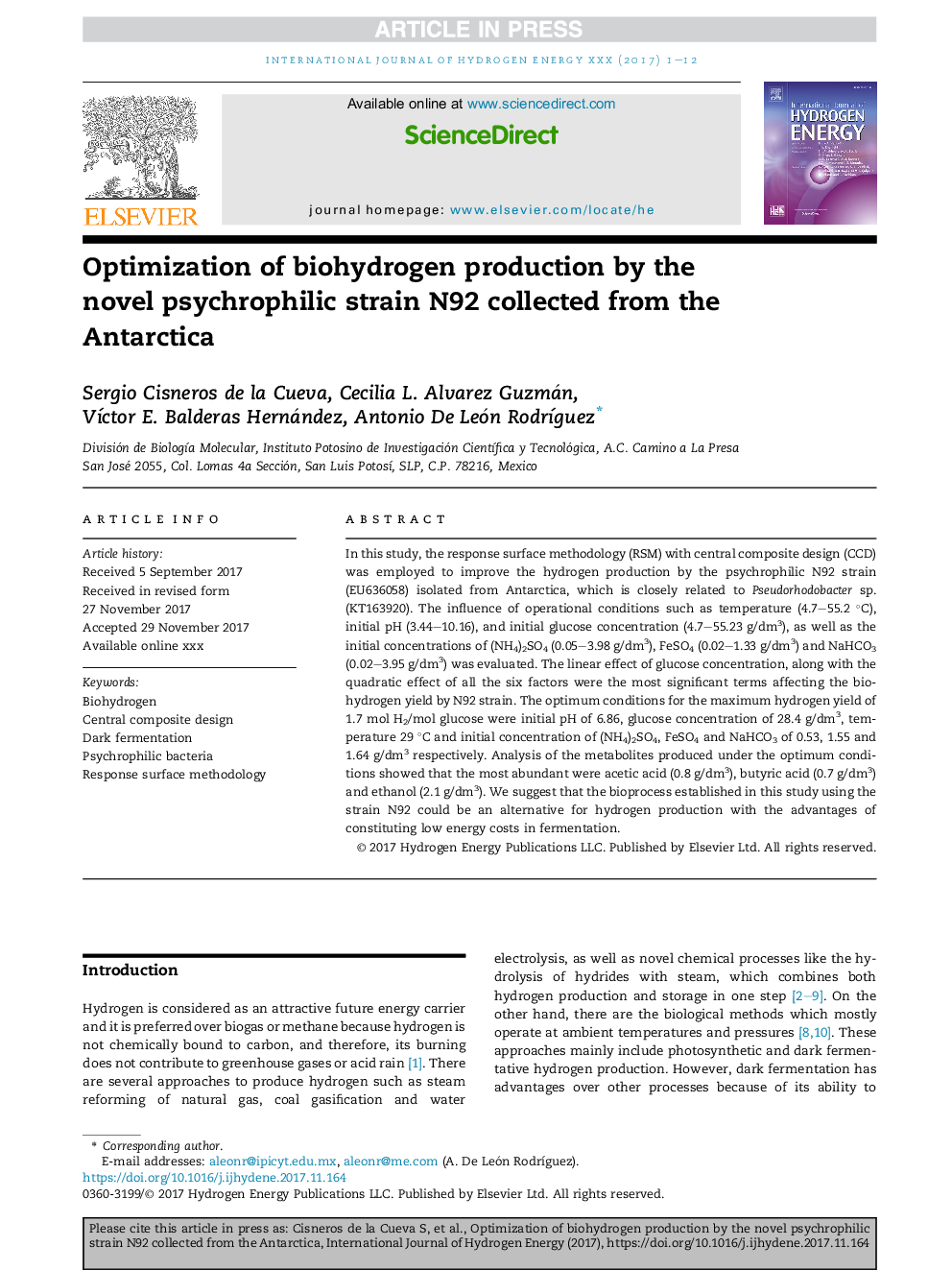| Article ID | Journal | Published Year | Pages | File Type |
|---|---|---|---|---|
| 7705320 | International Journal of Hydrogen Energy | 2018 | 12 Pages |
Abstract
In this study, the response surface methodology (RSM) with central composite design (CCD) was employed to improve the hydrogen production by the psychrophilic N92 strain (EU636058) isolated from Antarctica, which is closely related to Pseudorhodobacter sp. (KT163920). The influence of operational conditions such as temperature (4.7-55.2 °C), initial pH (3.44-10.16), and initial glucose concentration (4.7-55.23 g/dm3), as well as the initial concentrations of (NH4)2SO4 (0.05-3.98 g/dm3), FeSO4 (0.02-1.33 g/dm3) and NaHCO3 (0.02-3.95 g/dm3) was evaluated. The linear effect of glucose concentration, along with the quadratic effect of all the six factors were the most significant terms affecting the biohydrogen yield by N92 strain. The optimum conditions for the maximum hydrogen yield of 1.7 mol H2/mol glucose were initial pH of 6.86, glucose concentration of 28.4 g/dm3, temperature 29 °C and initial concentration of (NH4)2SO4, FeSO4 and NaHCO3 of 0.53, 1.55 and 1.64 g/dm3 respectively. Analysis of the metabolites produced under the optimum conditions showed that the most abundant were acetic acid (0.8 g/dm3), butyric acid (0.7 g/dm3) and ethanol (2.1 g/dm3). We suggest that the bioprocess established in this study using the strain N92 could be an alternative for hydrogen production with the advantages of constituting low energy costs in fermentation.
Keywords
Related Topics
Physical Sciences and Engineering
Chemistry
Electrochemistry
Authors
Sergio Cisneros de la Cueva, Cecilia L. Alvarez Guzmán, VÃctor E. Balderas Hernández, Antonio De León RodrÃguez,
